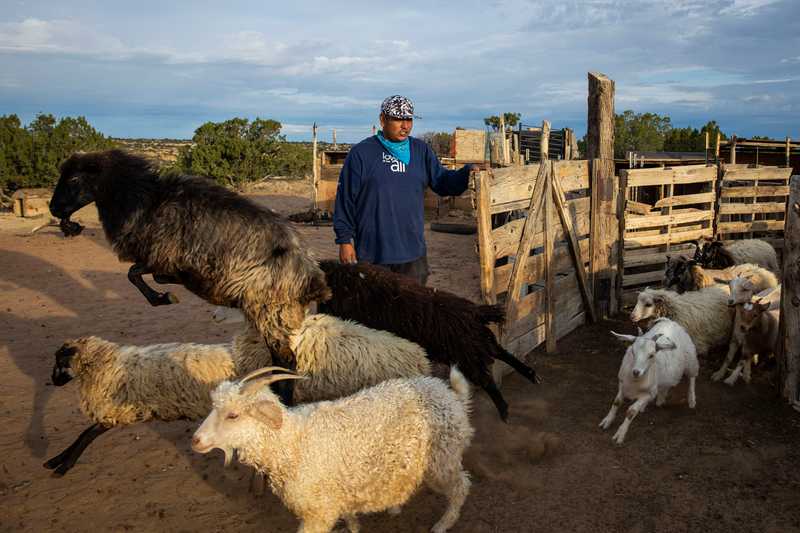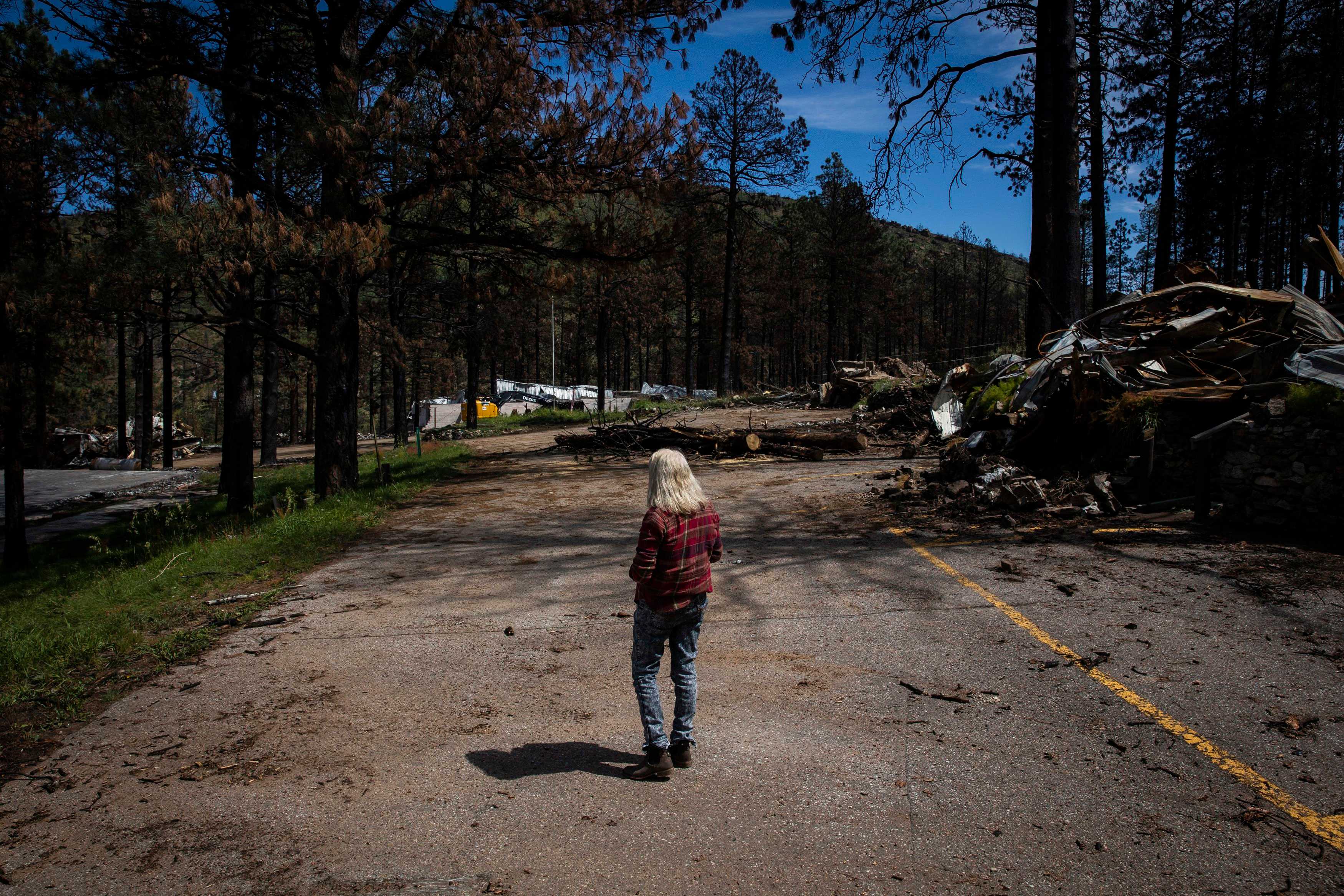
Los Angeles team
Nov. 1, 2022
The government set a disastrous fire. Months later, residents of Las Vegas, N.M., are just hanging on.
LAS VEGAS, N.M. — It was early on the morning of April 22 when Cyn Palmer got a text from her electric company. They were cutting off power. She immediately knew what that meant: Fire was coming.
Seconds later, the lights in her house shut off. “I stood in my dark hallway,” Palmer recalled in September. “I can’t describe the feeling of doom and dread knowing what was about to happen.”
Then another text came, from a man she knew at the National Center for Emergency Management. “It just said, ‘I’m so sorry, Cyn,’” she recalled. “And a short time later the fire came.”
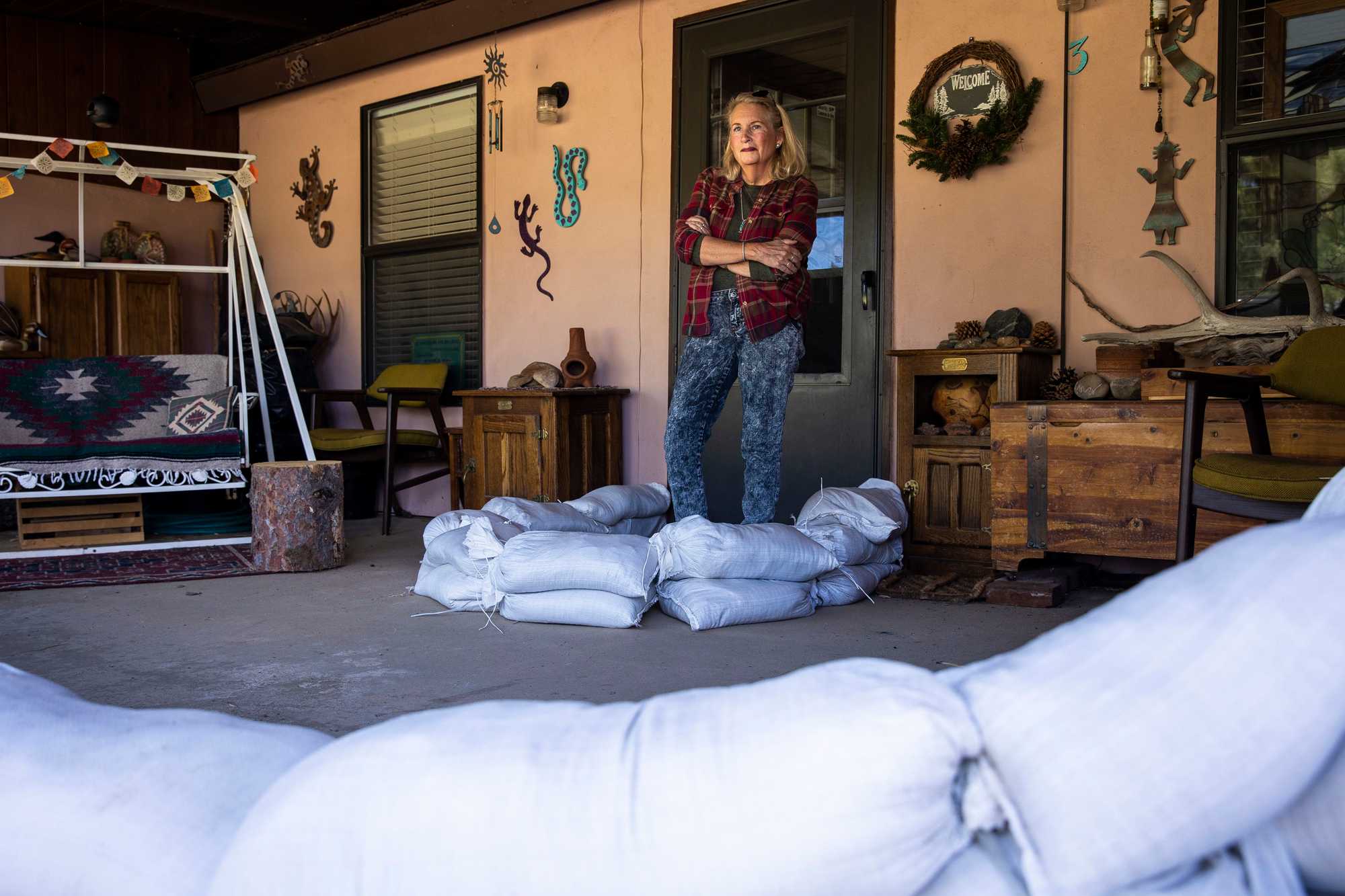
With two friends following in their car, Palmer drove up to the crest of the hill to see the direction of the wildfire raging through the foothills of the Rocky Mountains — it would soon merge with another fire, becoming the largest in New Mexico history. The temperature in Palmer’s car registered 135 degrees, and her phone shut off. She tried to honk to signal that her friends needed to turn around, but the wind was so strong that they couldn’t hear.
“So I got out. And when I got out, I got burned, because there were hot cinders that were hitting my hair, my face,” she said. She tried to walk to their car, but the wind knocked her down. She began to choke. Finally, she was able to pound on the window to signal that they needed to get out.
Palmer later had to be treated for smoke inhalation, but she made it to the evacuation center in Las Vegas, where the Red Cross was handing out supplies in the cafeteria of a middle school.
Shaken and covered in soot, Palmer was sitting at one of the tables when she was approached by a stranger. The woman wanted to help and had heard she might need a place to stay. Would she like to come home with her?
For the past seven months, residents of Las Vegas, N.M., and its environs have existed in a state of perpetual crisis — some people have suffered shortages, others have lost everything.
The fires were first. Two controlled burns, set by the government, got out of hand in the wind and eventually merged into what is now known as the Calf Canyon/Hermits Peak fire, which would affect more than 340,000 acres, an area larger than Los Angeles.
Then came the floods. All of the water and silt and debris that the trees might have held back came rushing through the burn scar, taking houses that the fire had spared, sweeping four people to their deaths.
And then came the shortages. Las Vegas was already in a water-starved area. The ash and soot poisoned the water supply, leaving the city with about a month of drinkable water, just when its hotels and community centers and churches were filling with people displaced by fire and flood.
More than anything, Anita Rivera remembers how the fire sounded: “Like a freight train,” she said, sitting in the courtyard of a budget motel in Las Vegas. The sound of a freight train, and then everything got black.
It was April 16, and she was at home with her husband in Tierra Monte, a hamlet northwest of the city. Rivera took off in one car. Her husband, Andrew Vigil, ran to grab their dog, Polar Bear, and followed a few minutes later. He couldn’t save their other pets, outdoor cats, and ducks. “It just ate everything up within hours,” he said.
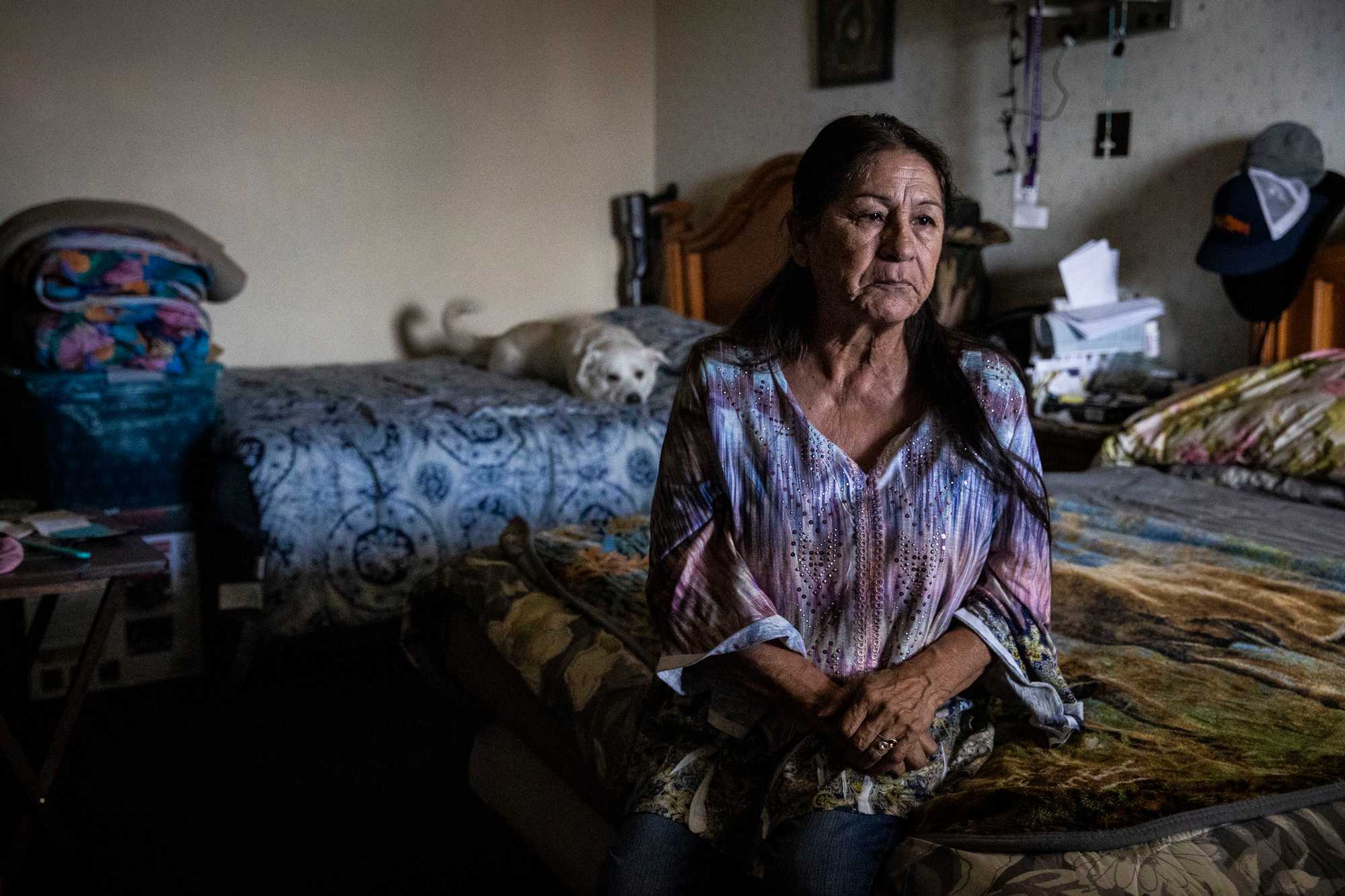
The heat was so strong that when they went back to see the wreckage, they saw metal running in rivulets like water from one of their old cars.
Back in the motel room where they had been living since the fire, Rivera was bustling around the narrow space, placating Polar Bear and arranging chairs. She sat down and began to cry. “It’s awful living here,” she whispered.
She misses her animals, the yard, the kitchen where she would make enchiladas or cook Thanksgiving dinner. She’s angry at the Forest Service, which lost control of the fires. “They took our life away overnight. And we ended up here. Why’d they go and do something like that?” she asked. “We worked hard for everything we had.”
Rivera and Vigil are uninsured. They hope FEMA will bring them a trailer, which they would bring back to their land and to what’s left of their house. In the meantime, they get some financial help for the motel room, which costs about $800 each month.
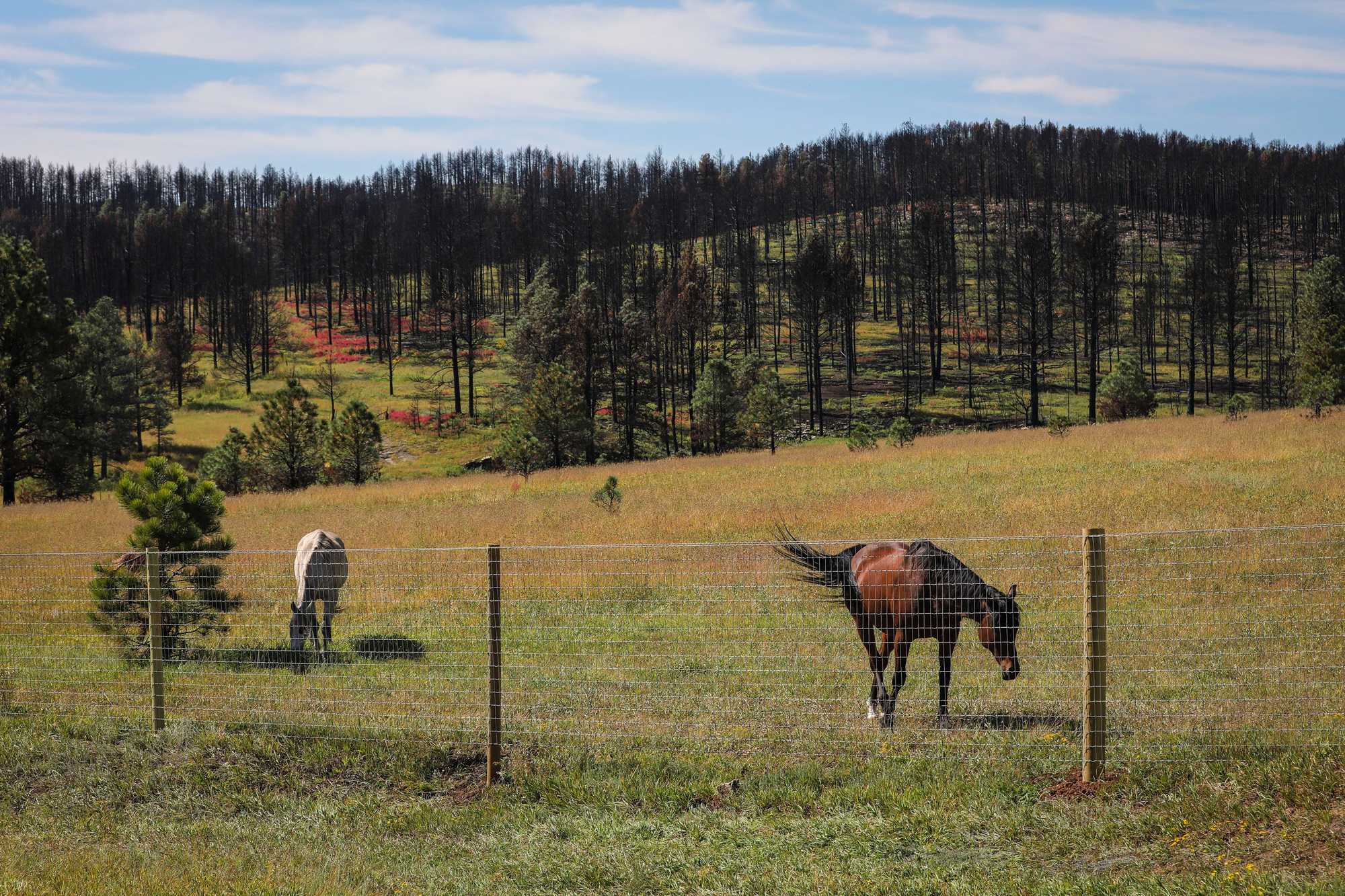
Recent stories from the Los Angeles team
Nov. 1, 2022
Two days, three Elvises, and one pink Cadillac crash: Inside the chaotic world of Elvis impersonators
Nov. 1, 2022
‘We lost a lot of elders during the pandemic’: A Navajo shepherd keeping traditions alive
Nov. 1, 2022
‘When we build something, it’s together’: Visit the famous Pimentel family guitar business
Both are disabled, but Rivera makes some extra money by cleaning rooms occasionally. And Vigil spends his days volunteering in spots where displaced people can find clothes, counseling, and food. “I had to do something, because I didn’t want to stay around here,” he said.
There are some bright spots. The owner of the motel is kind to them and lets Polar Bear stay in their room. And their neighbors in the motel, who were also displaced, have become friends. They brought over tomato plants when the couple first moved in and an ice cream cake to celebrate their birthdays.
And real help may be on the way: President Biden recently signed a bill that would send $2.5 billion to help victims of the disaster, and it includes provisions for the uninsured. Actual payouts may be many months away, however.
In the meantime, Rivera tries not to let grief overwhelm her. “It’s just temporary,” she said. “God opens new doors, and he’s going to open a big one for us.”
In Las Vegas, residents are on edge. They are taking sponge baths, watering their gardens with gray water or water from the river, taking laundry to Santa Fe, eating off plastic plates to avoid washing dishes. James Vaughn, pastor at the Heart of David Worship Center, has decided to pause baptisms.
There’s a tiny biweekly newspaper, but many residents look to Facebook for updates instead.
“Every week it changes,” said Sara Mathews, who owns a bar and cafe in Las Vegas. “Do we have 20 days worth of water? Do we have 30 days worth of water?”
Water has always been scarce in this area, but climate change has exacerbated the problem, and residents say authorities have not kept up. “This was a decision made by our federal government,” Mathews said. “They started a fire on a horrifically windy day, they didn’t listen to the people who had boots on the ground that said we shouldn’t do this. They did it anyways. And it has forever changed our way of life.”
A spokesperson said the Forest Service paused prescribed burns in May for a 90-day review. In September, the agency announced that burns would resume conditionally.

Cyn Palmer’s house was damaged, but not destroyed. Inside, ash had settled over her belongings like dirty snow drifts.
“This is literally toxic,” Palmer said, gesturing around her living room. “If we were to stay in here for an hour or so, you would start to develop a sore throat, a headache, you’d start to feel not well.” There is also the perpetual danger of more flooding. Palmer has sandbagged the empty house while she waits for insurance money she needs to help her clean up.
At the evacuation center that night in April, Palmer had declined when the stranger offered to take her home. The woman, whose name is Linda Alaniz, left Palmer her number and said to call if she needed anything. A week later, the friends Palmer ended up staying with also needed to evacuate. So she called Alaniz’s number.
Did that offer stand? Palmer asked. It did.
“You have a room,” Alaniz said. “Come home.”
Over time, Palmer cycled through 15 places — friends’ houses, Alaniz’s home, hotels — worrying all the while about being a burden.
Ultimately, Palmer decided that even if she can’t stay inside of her house, she wants to be near it. She showers and brushes her teeth in Las Vegas or at a friend’s. And each night, she parks her car out front, lays a blanket and pad on the back seat, and goes to sleep.
Lately, when she wakes up, there is frost coating the car windows, winking in the morning light. If she weren’t so worried about what it meant — winter is getting closer — it would be beautiful.
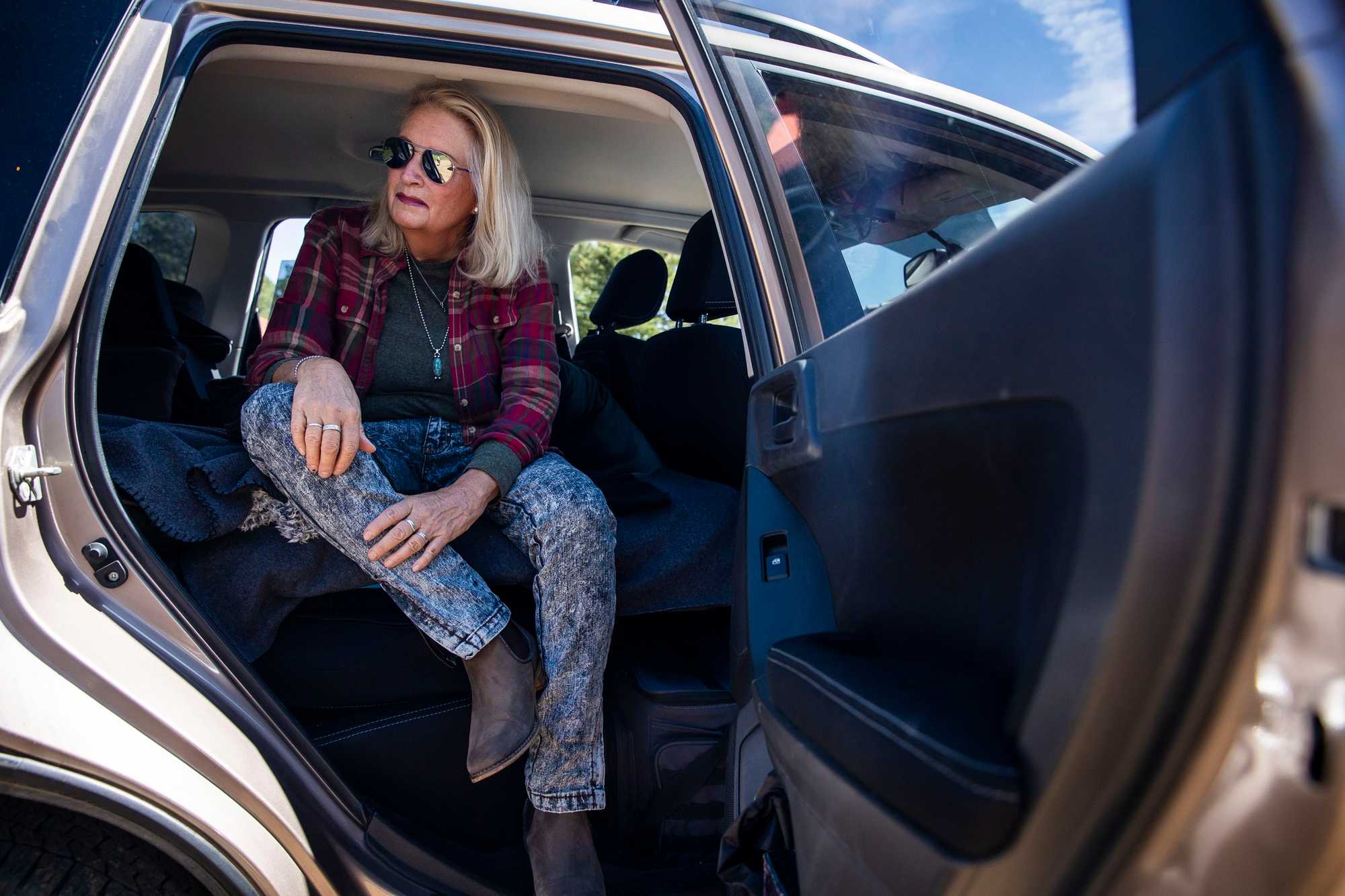
Join the discussion: Comment on this story.
Credits
- Reporters: Julian Benbow, Diti Kohli, Hanna Krueger, Emma Platoff, Annalisa Quinn, Jenna Russell, Mark Shanahan, Lissandra Villa Huerta
- Photographers: Erin Clark, Pat Greenhouse, Jessica Rinaldi, and Craig F. Walker
- Editor: Francis Storrs
- Managing editor: Stacey Myers
- Photo editors: William Greene and Leanne Burden Seidel
- Video editor: Anush Elbakyan
- Digital editor: Christina Prignano
- Design: Ryan Huddle
- Development: John Hancock
- Copy editors: Carrie Simonelli, Michael Bailey, Marie Piard, and Ashlee Korlach
- Homepage strategy: Leah Becerra
- Audience engagement: Lauren Booker, Heather Ciras, Sadie Layher, Maddie Mortell, and Devin Smith
- Newsletter: LaDonna LaGuerre
- Quality assurance: Nalini Dokula
- Additional research: Chelsea Henderson and Jeremiah Manion
© 2022 Boston Globe Media Partners, LLC

